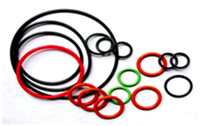Guangdong Yuanlin New Materials Co., Ltd
Contact person: Mr. Gu
Mobile phone:13826960299
Contact person: Li Yongfeng
Mobile phone:18128036097
Telephone:0769-88319157
Fax:0769-88319159
E-mail:gogothomas421@gmail.com
Address:No. 10, Shangye Road, Changping Village, Daojiao Town, Dongguan City
Kaolin is the general name of a group of clay minerals, which is basically composed of Kaolinite group and polyhydric Kaolinite group, mainly composed of Kaolinite and halloysite, with the content of more than 90%, followed by hydromica, often mixed with Pyrite, Limonite, Anatase, quartz, chalcedony, alum, and sometimes a small amount of organic matter. Kaolin has excellent process characteristics such as plasticity, adhesion, sintering, and fire resistance, making it widely used in industries such as ceramics, papermaking, rubber, plastics, and refractory materials. There are three main genetic types of kaolin deposits: weathering type, sedimentary type, and hydrothermal alteration type.
1. High gradient magnetic separation
The dyeing impurities in kaolin have weak magnetism, so they can be removed using a high gradient magnetic separator. The use of PEM-84 wet high gradient magnetic separator in the United States can reduce Fe2O3 in kaolin raw ore from 0.9% to 0.6%, and Ti2O3 from 1.8% to 2.0% to 0.8%. This high gradient magnetic separator uses stainless steel wool as the medium, and requires a power consumption of 270-500kw when the field strength is 1.5-2.0T. Our country has conducted wet research on the soils of Hunan's sour Ling, Leiyang, Boluo, and Hengling, and has achieved good experimental results, especially in the removal of iron and titanium from kaolin using vibration high gradient magnetic separation, which has achieved very good experimental indicators. The comparison test results between the CLY500 vibrating high gradient magnetic separator from China and the PEM-84 high gradient magnetic separator from the United States for kaolin in Leiyang, Hunan show that the performance of China's high gradient magnetic separator is better than that of the United States in terms of reducing iron and titanium impurity content and improving whiteness. Because some iron impurities in some kaolin ores exist in the form of silicate, and the magnetism is very weak, while titanium exists in the form of Rutile, the magnetic separation method is difficult to work, so flotation, selective flocculation and other operations are usually used in the process to improve the quality of products. In recent years, superconducting magnetic separators have been successfully applied to kaolin separation, not only reducing energy consumption, but also greatly improving field strength, and improving the quality of kaolin concentrate. The Eriez superconducting magnetic separator has the characteristic of rapid magnetization increase, which can reach a high design field strength within 60 seconds, while the demagnetization time is short, which greatly shortens the time required to flush magnetic impurities from the magnet during the load cycle. Its energy consumption is low, reducing by about 80% compared to conventional magnetic separators, and its processing capacity is large, reaching over 100t/h. A reciprocating spiral tube superconducting magnetic system has been tested in the UK, with a design similar to a conventional can shaped magnetic filter. The difference is that it retains the superconducting magnet in the excited state during the working cycle, without the need for switch control, and can operate continuously. The 3048mm superconducting high gradient magnetic separator designed by German company Humboldt has a simple structure, low operating and maintenance costs, and good stability.
2. Foam flotation
The purpose of flotation operation is to extract titanium impurities from kaolin. Due to the extremely fine particles of impurities, carrier flotation process is usually used. The carrier minerals can be Calcite and silica sand scrubbing to remove the surface dirt. At the same time, scrubbing can also dissociate Anatase and Hematite from kaolin minerals. Then a small amount of activator and fatty acid collectors are added to the slurry together. The Anatase covered by the collector forms selective agglomeration under the condition of high shearing and stirring, thus significantly increasing the particle size, The slurry after high shear stirring and mixing is diluted to 15% -20% solids for flotation, and Alunite in kaolin can also be removed by flotation.
It is the general name of a group of clay minerals. Its basic composition is the Kaolinite group and the hydrated Kaolinite group, mainly composed of Kaolinite and halloysite, with the content of more than 90%, followed by hydromica, often mixed with Pyrite, Limonite, Anatase, quartz, chalcedony, alum, and sometimes a small amount of organic matter. Kaolin has excellent process characteristics such as plasticity, adhesion, sintering, and fire resistance, making it widely used in industries such as ceramics, papermaking, rubber, plastics, and refractory materials. There are three main genetic types of kaolin deposits: weathering type, sedimentary type, and hydrothermal alteration type.
